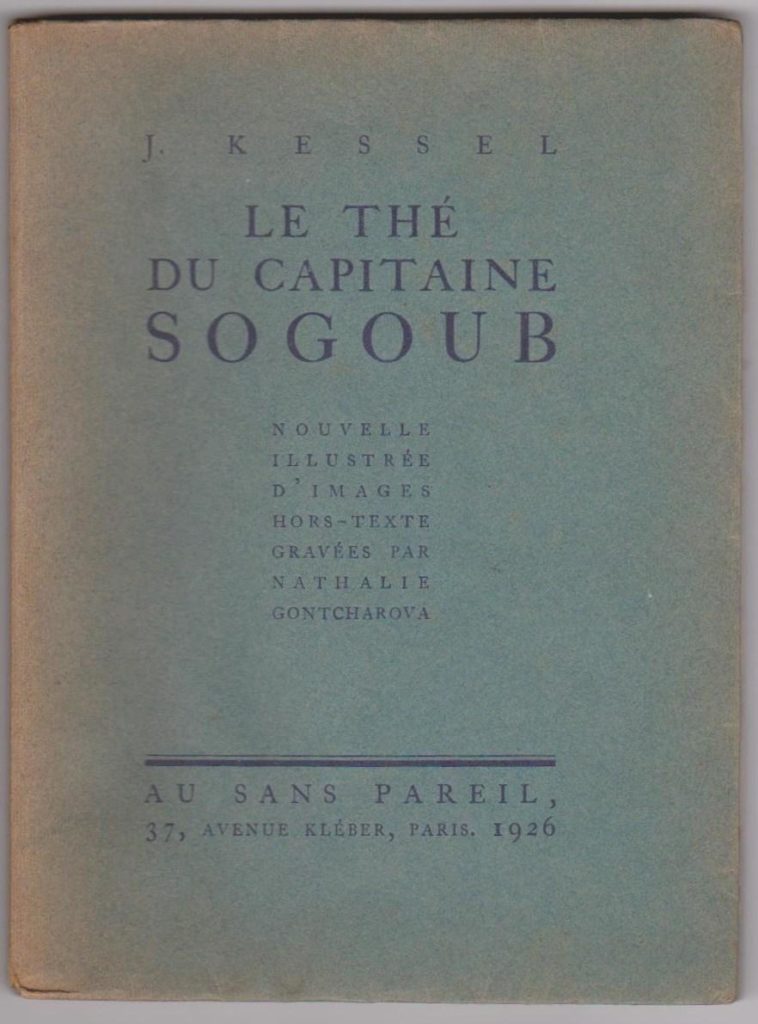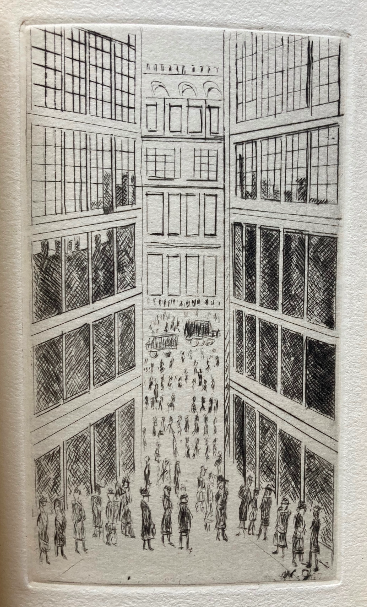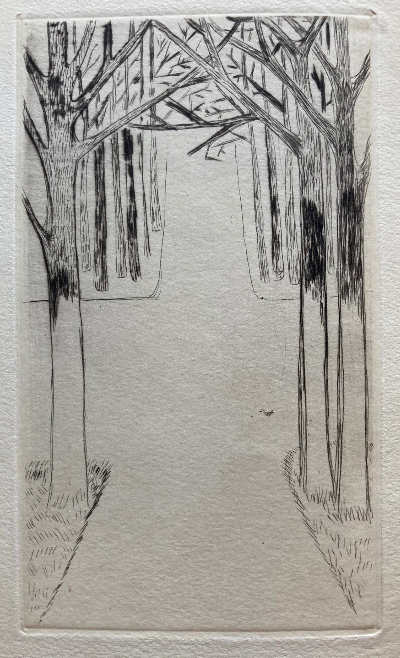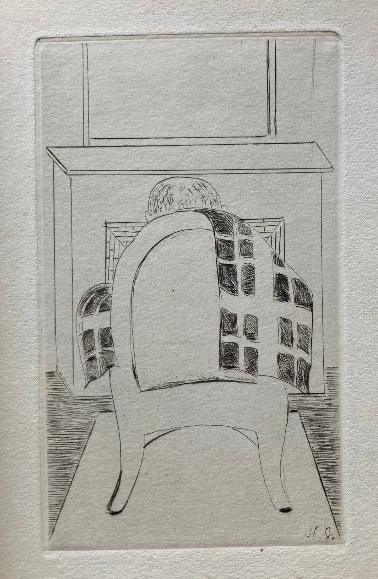KESSEL, Joseph. Le thé du capitaine Sogoub / nouvelle illustré d’images hors-texte gravées par Nathalie Gontcharova. — Paris, Au Sans Pareil, 5 April 1926.
Octavo (145 x 190 mm). Half-title, frontispice, title, dedication, 42 pp. With 6 engravings hors-texte, each protected with onion skin.

The edition consists of 20 copies on velin de cuve, with a double suite of engravings (“Ces exemples reserves aux Amis du Sans Pareil et imprimes à leur nom, sont numérotés de 1 à 20”); 60 copies on japon imperial, with a double suite of engravings (#21 to 80); 60 copies on hollande van Gelder with one suite of engravings (#81 to 140); 120 copies on hollande van Gelder (#141 to 260); and 1000 copies on velin d’Annonay, des frères Montgolfier (#261 to 1260), as well as “quelques exemplaires hors commerce, tous signés par l’éditeur”.
The story Captain Sogoub’s Tea was written by the French novelist Joseph Kessel (1898-1979), a member of the French Academy and a Knight of the Legion of Honor. The author tells about a day in life of the Russian immigrants, about their loneliness and melancholy. Kessel was born in Argentina, in a family of immigrants from Russia. In the early twentieth century, his family returned to Europe; in 1905-1908, they lived in Orenburg, Russia, and then moved to France. Mikhail Seslavinsky in his book “Rendezvous” describes the publication as follows: “A true and sincere account of a day in the life of Russian emigrants [since 1905], of their terrible loneliness and longing. Captain Saugub, an emigrant since 1925, finds himself in Paris without a livelihood or a roof over his head. He visits an old Russian doctor and his wife Maria Lvivna for a warm meal, where he can immerse himself in memories and frank conversation”. In many ways, Goncharova and Laroionov embodied the book characters of the Russian emigrants in Paris, living with memories of their abandoned homeland.






The edition was issued by the famous publishing house Au sans Pareil, founded in 1919 by René Hilsum (1895–1990), André Breton’s student who was an editor of works by Breton, Philippe Soupault and Louis Aragon. Au sans Pareil was the first publisher of dadaist and surrealist books in France; in 1920, Hilsum opened an eponymous bookstore and a gallery; it also produced books with illustrations by famous artists from the former Russian Empire Marc Chagall and Yuri Annenkov.
For the present edition, Goncharova created a series of six original etchings, one of which was used as a frontispiece. This is her only illustrative series made in such a technique. Here we already notice that figurative images replace cubo-futurist and abstract compositions that Goncharova had a tendency to make in most of her earlier illustrations. The white and empty, radically different approach to pictorial forms contrasts with her earlier lavish and profusely coloured designs.
- L’art décoratif théâtral moderne
- Samum
- Motdinamo
- Transparent Shadows and Forms
- Twelve. Scythians.
- Gorod (City)
- Conte de Tsar Saltan
- The Russian Ballet in Western Europe 1909-1920
- Tale of Prince Igor
- L’Annonciation: Roman
- Le thé du capitaine Sogoub
- Les Montparnos
- Les Ballets Russes de Serge de Diaghilew
- Skazki (Fairytales)
